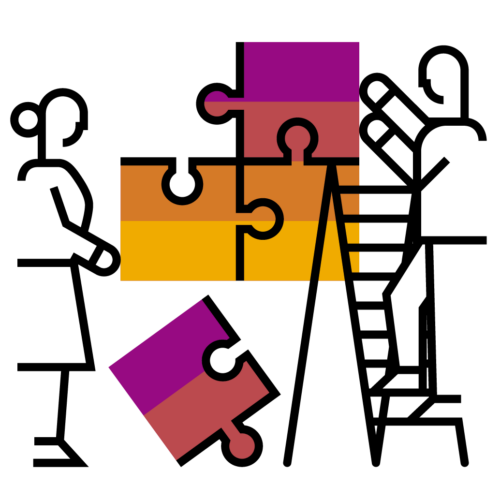Training is Organizational Change

In a recent article, The Great Training Robbery, Harvard professor Michael Beer and colleagues Finnstrom and Schrader document the case that much of learning interventions are wasted. In a related interview, Beer suggests that as little as 10% of training actually has any impact! What’s going on? Let’s unpack it.
Training in Context
When you have a training intervention, there should be a specific performance gap you want to address. Whether it’s onboarding, improving sales, reducing variation, what have you, you should be focusing on a specific change in behavior. There are other solutions to other performance problems, and it should be the case that you’ve identified a lack of skills.
Now, this typically comes from outside L&D. And, more importantly, it should have benediction from above. Looking at this in context, there are a number of factors to consider. Or, to think of it another way, ways in which such an initiative can go wrong.
The first thing is that leadership has to have a clear vision of what’s needed and why. If there isn’t an obvious performance problem, what’s driving the request? Is it just because there’s a problem and the first reaction is to request a course? What happens without clear vision is that the course doesn’t have the necessary focus. Thus, the problem to be solved isn’t well-defined, and the way to determine that the solution has addressed the problem will be hard to infer.
Without this vision, it’s hard to align the elements. Good instructional design works backwards from clear objectives. Thus, the assessment should be clearly tied to the desired outcomes, and then the learning experience developed to help learners succeed on that assessment. The performance consulting process should have identified a specific performance gap and a clear mandate for training. This is unlikely when there’s not an identified vision.
Another situation is having support after the class. Individuals trained but then released back into the workplace without support are likely to suffer from one or the other of two barriers. The context makes it easy to backslide into previous habits. And without explicit support around the behavior, specifically coaching and encouragement from supervisors of the performers, the likelihood of application is low. Thus, training the supervisors to be part of the solution is a necessary component, but again harder to sell without a clear vision.
Finally, and perhaps most importantly, without a good definition of what the performance gap is and how the change will be documented, a meaningful outcome has a low likelihood. Without a guide to measure the effectiveness of the intervention, there’s no chance to tune and improve, let alone detect if it is, or isn’t, working!
Making it work
What to do? First, you have to view an intervention, really any (including performance support, change in compensation, etc), as an organizational change. That is with all that entails. Org change is a matter of systematic steps.
To start, you should do performance consulting. What is the problem, how do you know it’s a problem, what does the nature of the problem suggest about the appropriate intervention, and (perhaps most importantly) how will you know that it’s been fixed? The process should identify the performance gap, and then do a needs analysis to figure out what to do, and then you start making your change plan.
The best models talk explicitly about having a vision for the change. One version I like, from Peter de Jaeger, talks about making it a choice: we can do it the old way (and the tradeoffs) or the new way (and those tradeoffs). If you do this right, of course, the choice is obvious. But wait, there’s more!
You need to take a number of steps. This includes rewarding those who follow the new way, and evangelizing their outcomes, You want to make it hard to go back to the old way. Also, be prepared for problems people will encounter, both those you expect and those you don’t.
When your intervention is training, it should have a good learning design. You should have a learning experience that hooks them in emotionally, provides meaningful challenges and appropriate feedback, with aligned (and minimal) content. And, of course, sufficient practice!
Then you need the full suite of support. Reactivating the learning if it’s not used often, training the managers to provide coaching and support, and ensuring appropriate stretch assignments. Also, evaluating the progress and deciding whether it’s working or needs tuning.
Ultimately, you want to have data documenting the success of the initiative. You want to be able to demonstrate that you’ve taken an approach, made it work, and the benefits are amassing in the organization.
Moving forward
In the Beer, et al, article, they cite a number of examples where organizations have failed these simple steps. The problems come from lack of leadership, poor coordination, lack of communication, and a top-down instead of an inclusive approach. These are fixable, but it requires more coordination. They suggest, as above, having a clear strategy, an honest assessment of the context and barriers, a willingness to take the necessary steps, and a steady execution.
Treating a performance intervention as an organizational change is a more comprehensive, and challenging, approach. It requires greater coordination between leadership, the business unit, and L&D. Yet, the necessity should be clear: if you don’t have these elements aligned, the effort could go awry. You don’t want to waste resources on initiatives that won’t lead to the desired change.
In the long term, L&D needs to start operating strategically. There aren’t likely to be new resources to begin with, so some effort will be necessary in prioritizing the initiatives. The flip side is that less effort-intensive initiatives may take the burden off. Performance support, and leveraging communities and curation, will be the preferred approaches going forward. Preparing formal learning, training, should be reserved for when it absolutely, positively, has to be in the head. But much of what is currently done is likely to be able to be addressed in other, more effective and more efficient ways. At the end of the day, you don’t want to be responsible for grand theft training. It’s time to treat training with the respect it deserves.





